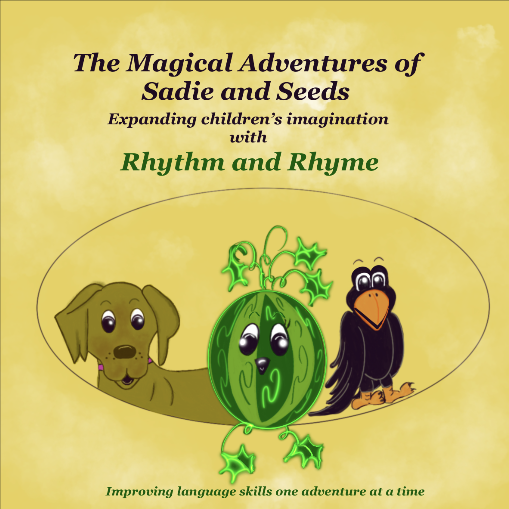Stories have a magical way of captivating our imaginations and teaching us important lessons in life. When it comes to children’s books, animal characters are powerful tools for teaching empathy and awareness about the world around us. These stories not only entertain but also lay the groundwork for understanding complex emotions and concepts in a fun and engaging way.
Children naturally connect with animal characters, seeing them as relatable figures that guide them in learning values such as empathy and care for the environment. In the enchanting world crafted by author C. Eidson, these themes come alive through vibrant stories in “The Magical Adventure of Sadie and Seeds.” These tales emphasize how characters, even those without human traits, demonstrate real-life principles that young readers can emulate.
Animal Characters as Role Models
Animal characters can offer unique insights and role models for children, often exemplifying behaviors that are both relatable and aspirational. Their stories typically highlight positive traits such as kindness, cooperation, and determination. In “The Magical Adventure of Sadie and Seeds,” these qualities are brought to life in a way that resonates with young readers, allowing them to learn through the characters’ adventures and challenges.
Consider the gentle elephant who always helps his friends or the clever fox who uses her wits to solve problems. These animal companions show empathy by going out of their way to help others, teaching young readers to think of others’ feelings and needs. For example, a story featuring a bear might illustrate how sharing and caring lead to wonderful friendships and understanding, making such values part of a child’s everyday framework.
By seeing these characters navigate situations that involve emotions or moral dilemmas, children become more aware of their own actions and how they can positively impact others. Moreover, the journeys of these animal characters provide a safe space for children to explore various social situations, reflecting their feelings and helping them manage relationships in their own lives. Through engaging tales that use rhythm and rhyme to enhance storytelling, young readers not only enjoy themselves but also internalize the virtues these animal heroes represent.
Teaching Empathy Through Animal-Themed Stories
Animals in stories offer valuable lessons, especially when it comes to fostering empathy. By following the adventures and challenges faced by these characters, children learn how to perceive and share the feelings of others. This is one of the central themes in animal stories where characters show compassion, understanding, and kindness toward each other. For instance, a determined rabbit might comfort a friend who feels left out, demonstrating that everyone’s feelings matter.
In each tale, animal characters navigate different social interactions that mirror real-life experiences, letting children see empathy in action. These scenarios help kids understand the importance of listening, being patient, and standing up for someone else, creating a ripple effect of positive behaviors. Through captivating plots and lovable characters, such tales build a foundation of empathy in young readers.
Promoting Environmental Awareness with Animal Stories
Animal stories often set in lush environments introduce children to the basics of environmental responsibility. Characters like a wise old owl or a playful dolphin often find themselves in habitats threatened by change or danger. Such narratives naturally lead children to think about the importance of protecting the planet.
These stories help kids grasp concepts like conservation and the significance of each living thing in our ecosystem. For example, a curious turtle might realize that keeping the waters clean is essential for everyone’s well-being, prompting young readers to consider how small actions can help protect the environment. Children not only enjoy engaging tales but also learn to appreciate nature and understand the role they can play in its preservation.
The Power of Rhythm and Rhyme
Rhythm and rhyme are tools that enhance storytelling, making it enjoyable and impactful. The playful use of rhythm in children’s books not only adds fun but also aids in memory retention and language development. Rhyme helps words flow naturally, drawing kids into the story and keeping them engaged.
Incorporating these elements into stories like those by C. Eidson makes them particularly enchanting. Rhyming passages make it easier for children to predict the next word or sound, boosting their confidence in reading skills. The catchy, rhythmic lines create a musical quality that children love returning to, reinforcing learning and making the stories memorable.
Nurturing a Generation of Empathetic and Environmentally Conscious Kids
Animal-themed stories play a crucial role in nurturing empathy and awareness in children. By immersing young readers in tales where they watch characters care for each other and the planet, these stories foster a sense of responsibility and understanding. When children relate to a brave lion or a gentle deer, they internalize lessons about empathy and the environment, becoming more conscientious individuals.
Encouraging the exploration of animal stories is an investment in building a generation that values kindness and environmental care. This genre not only delights children with imaginative escapades but also gears them with principles that they carry into adulthood, shaping their perspectives and actions in the real world. The characters and tales they meet along the way craft memories and attitudes that are both fun and foundational.
Explore the delightful world of animal adventures with kids animal books from The Magical Adventure of Sadie and Seeds. Our captivating tales nurture empathy and environmental awareness, making storytime both educational and fun. Let your child embark on journeys with their animal friends, learning valuable lessons about kindness and care for our planet along the way. Shop now.

